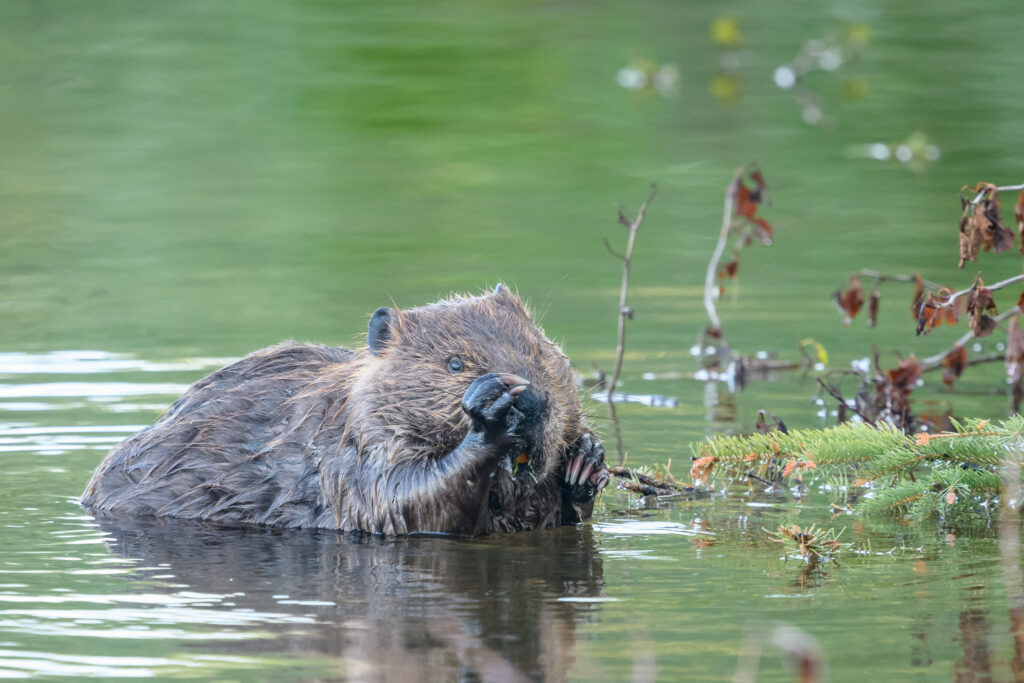
Beavers have a remarkable ability to transform landscapes. Using their sharp teeth, they fell trees and shrubs and build dams, which cause small valleys to fill with water and form new lakes. Some of these lakes measure five or ten acres in size, or even more. And beavers are very efficient builders; they often build their dams at precisely those points where can they have the greatest effect with the least effort.
Scientists studying beaver activity in the Arctic regions of Alaska have found that the changing climate is leading to a substantial increase in beaver populations and their effect on the landscape.
In 2018, researchers found that the beavers living in a 7,000 square-mile area in northwest Alaska had created 56 new lakes in just five years. Thanks to rising temperatures, more and more habitats offer the shrubs that beavers need for food and building material. In addition, the lakes, which used to freeze solid, now offer beaver-friendlier conditions. Also, beavers are not hunted as intensively as in the past.
The scientists were surprised that beavers have seized the opportunity so intensively. There is basically an exponential growth in beaver dams. This is actually a worrisome situation. Forming all these new lakes degrades ice-rich permafrost in the area. In the Kotzebue region of Alaska, the overall water area has increased by more than 8% over the past 17 years, and roughly two-thirds of that is due to beavers.
The degradation of the Arctic’s permafrost is a dangerous situation and it appears that anyone who wants to predict its future has to keep the activity of beavers in mind.
**********
Web Links
Beavers gnawing away at the permafrost
Photo, posted June 23, 2018, courtesy of Becky Matsubara via Flickr.
Earth Wise is a production of WAMC Northeast Public Radio.
Leave a Reply